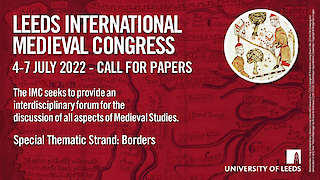James Tauber, independent scholarIn his well-known 1975 essay, Richard C. West explored the notion, which he credits first to George H. Thomson, that Tolkien adopted the medieval technique of entrelacement or ‘interlacing’ in writing The Lord of the Rings. This paper makes use of computational narrative analysis to identify and visualise examples of this interlace structure. The analysis, part of the ongoing work of the Digital Tolkien Project, starts with marking up the text of The Lord of the Rings for certain paragraph-level features such as participants, locations, passage-of-time indicators, and direct speech. This markup is then used to identify narrative discontinuities and ‘analepsis’ in the text and to visualise the structure of the interwoven narrative. Although focused on The Lord of the Rings, some interlacing is also demonstrated in The Hobbit, and the techniques and tools described in this paper could be used for other texts, including in medieval literature.
Kristine Larsen, Professor, Geological Sciences, Central Connecticut State UniversityAmong the medieval masterpieces that played an influential role in J.R.R. Tolkien’s life is the dream vision poem Pearl. Tolkien was introduced to the complex elegiac work as a student, taught it as a professor, and translated it into modern English as a scholar. He also crafted a poem in the style of Pearl, The Nameless Land (later The Song of Ælfwine), based on characters in his grand mythology of Middle-earth. The question remains, however, as to what additional impact Pearl had on his own writing. A close parallel reading of Tolkien’s translation of Pearl alongside his early mythology (prior to The Lord of the Rings) was motivated by the possibility that one of his mysterious minor original characters, the Sleeper in the Tower of Pearl, was an homage to Pearl. But as this paper will describe, additional ‘pearls’ of Pearl can be found throughout Tolkien’s writings of the so-called Blessed Lands and the story of Eärendil the Mariner.
Andoni Cossio, PhD student, Euskal Herriko UnibertsitateaJ.R.R. Tolkien was in part responsible for the misconception that writers of Middle English alliterative verse were attempting a revival of some sort, and this is nowhere better expressed than in his work on the Gawain-poet. Tolkien must have held the work in high esteem for the Gawain-poet’s brave effort of being part of what was then termed the ‘alliterative revival of the 14th century’, which clashed with the more popular poetry of the contemporary Geoffrey Chaucer and its characteristic end rhyme. That supposed movement failed, as the evolution of modern poetry attests, but Tolkien most likely found the whole attempt heroic and cherished the desire in Sir Gawain and the Green Knight to rescue the device of alliteration from Old English literature that was so natively English. This paper argues that Tolkien’s theoretical interpretation had in part the purpose of supporting the Alliterative Revival of the 20th century that he and his writer friends attempted.
